
Tuesday November 21, 2023
By Nick Turse
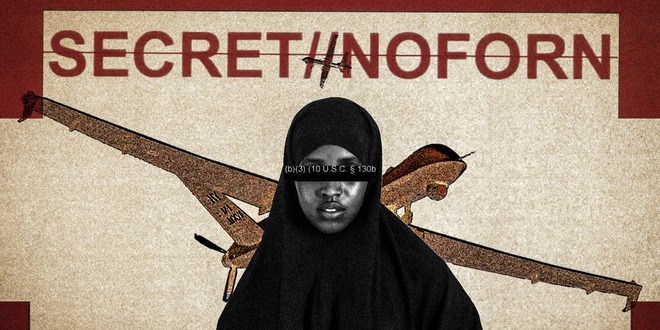
On the morning of 1 April 2018, Luul Dahir Mohamed was on her way to visit her brother in the Galguduud region of central Somalia. She wanted to meet his children for the first time. Her brother, Qasim Dahir Mohamed, was supposed to pick her up. But they could not reach each other on the phone, and so Luul caught a ride in a maroon Toyota Hilux pickup instead.
Qasim actually passed the Hilux on the road, and saw Luul sitting in the passenger seat. Her four-year-old daughter, Mariam, was on her lap. He waved and hooted, but the vehicle kept going.
A little while later, Qasim heard an explosion, followed by another and, after a pause, one more blast.
The news spread fast: A drone strike had hit a pickup. Qasim and his brother rushed towards the site.
When they found the Hilux, the roof was torn open, the bed was smashed, and its cargo of mattresses and pillows were aflame. Four men were dead inside and another young man lay lifeless in the dirt nearby. About 200 feet away, Qasim found what remained of Luul. Her left leg was mangled, and the top of her head was missing. She died clutching four-year old daughter, Mariam, whose body was peppered with tiny shards of shrapnel.
Qasim tore off a swath of his sarong and began gathering up small pieces of his sister. Stunned and grieving, he spent hours searching for fragments of her body along the dirt road, working by the glare of his car’s headlights as the sky darkened.
Finally, he bundled Luul’s and Mariam’s remains and brought them home. Luul’s body was so mutilated that it was impossible to properly wash, as is required in Islam. Instead, he wrapped her with care in a shroud. Luul and Mariam were buried together in a village cemetery. The next day, locals living near the strike site called Qasim. They had found the top of Luul’s skull complete with hair and a delicate gold teardrop dangling from one ear. She was only 22-years old at the time of her death.
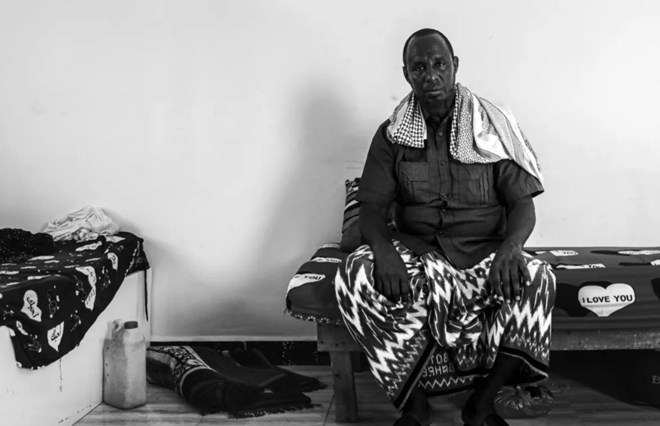
Qasim Dahir Mohamed, who found his sister Luul’s body after the US drone strike, poses for a photo in Mogadishu, Somalia, on May. 10, 2023. Photo: Omar Faruk for The Intercept
The blindness of war in distant place
Nearly a century ago in Nicaragua, American Marines in an armed propeller plane spotted a group of civilian men chopping weeds and trimming trees far below. Convinced that something nefarious was underway, they opened fire.
The US never bothered to count the wounded and dead.
Since then, anonymous, unaccountable devastation from the air has been a feature of the American way of waging war in places like in Korea, Vietnam, Cambodia, Afghanistan, Somalia, Iraq, and Syria.
This investigation, published in partnership with The Intercept and based on exclusive documents and extensive interviews, examines the flawed and fatal decision-making that led to one such air strike – the attack that killed Luul and Mariam. It is a story about missed connections and faulty intelligence, about Americans misreading what they saw and obliterating civilians they didn’t intend to kill but didn’t care enough to save.
When Luul and Mariam boarded the maroon Hilux, they had no idea that it was being surveilled from the sky by the American military, who suspected that several al-Shabaab militants or sympathisers were on board.
Thousands of kilometres away, in a military joint operations centre that the US government refuses to identify, members of a Special Operations task force that officials won’t name watched live footage, that they declined to release, of everyone who entered the Hilux. They recorded and scrutinised it, chronicling when each “ADM” – or adult male – got in or out, where they walked and what they did. The Americans logged these minute details with a pretence of precision, but they never understood what they were seeing.
For all their technology and supposed expertise, the Americans were confused, and some were inexperienced, according to a US Department of Defence investigation obtained by The Intercept via the Freedom of Information Act.
The investigation report is the first such document to be published about a US drone strike in Africa. It reveals that after months of “target development,” the Americans suddenly found themselves in a mad rush to kill people who posed no threat to the US in a war that the US Congress never declared. They argued among themselves about even the most basic details, like how many passengers were in the vehicle. And in the end, they got it wrong.
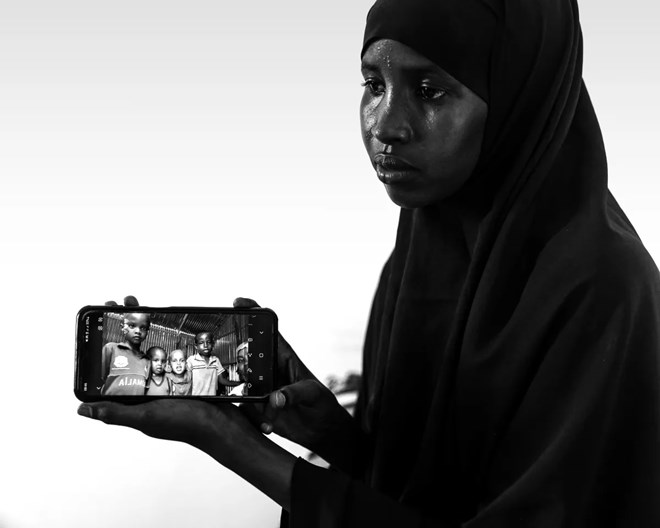
Qaali Dahir Mohamed shows a picture of her nephew Mohamed Shilow Muse, far right, on her cellphone in Mogadishu, Somalia, on May. 10, 2023. Photo: Omar Faruk for The Intercept
The Americans couldn’t tell a man from a woman, which might have affected their decision to conduct the strike. They also missed the four-year-old child whose presence should have caused them to stand down.
In the joint operations centre, the Americans quickly realised their initial strike had failed to kill all the passengers and decided to eliminate what the investigation file refers to as a sole “survivor running away from vehicle post the first engagement”. But the “survivor” was actually two people: Luul and Mariam. Seconds later, another missile screamed down from the sky.
“It seemed like they did everything wrong,” said an American drone pilot who worked in Somalia and examined the investigation file at The Intercept’s request.
The next day – 2 April – US Africa Command, or AFRICOM, announced it had killed “five terrorists” and destroyed one vehicle, and that “no civilians were killed in this airstrike”. The Somali press immediately said otherwise. By the following month, the task force had appointed an investigating officer to sort it all out. He quickly determined that his unit had killed an “adult female and child” – as well as four adult men – but expressed doubt that their identities would ever be known.
According to the secret investigation, the attack was the product of faulty intelligence as well as rushed and imprecise targeting carried out by a Special Operations strike cell whose members considered themselves inexperienced. Despite this, the investigation exonerated the team involved. “The strike complied with the applicable rules of engagement,” wrote the investigator.
AFRICOM declined to answer The Intercept’s questions about the attack or civilian casualties in general. When the command finally admitted the killings in 2019, AFRICOM’s then-commander, General Thomas Waldhauser, said it was “critically important that people understand we adhere to exacting standards and when we fall short, we acknowledge shortcomings and take appropriate action”.
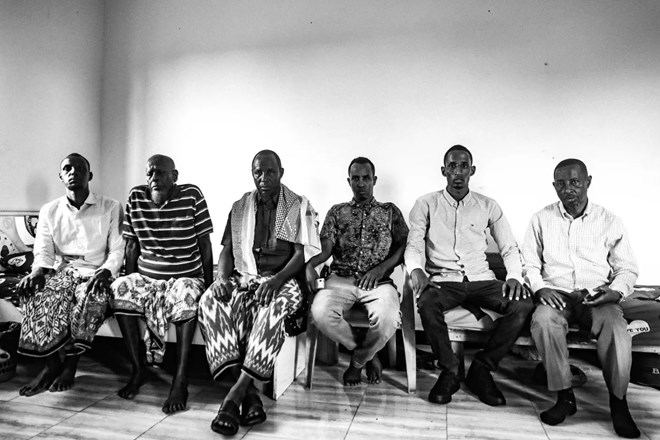
From left to right: Shilow Muse Ali, the father of 4-year-old Mariam Shilow Muse and husband of 22-year-old Luul Dahir Mohamed, both of whom were killed in a U.S. drone strike in 2018; Luul’s father and Mariam’s grandfather, Dahir Mohamed Abdi; and Luul’s brothers and Mariam’s uncles Qasim Dahir Mohamed, Ahmed Dahir Mohamed, Hussein Dahir Mohamed, and Abdi Dahir Mohamed, in Mogadishu, Somalia, on May 10, 2023. Photo: Omar Abdisalan for The Intercept
“We can do whatever we want”
Some who took part in America’s drone war in Somalia dispute that. “When I went to Africa, it seemed like no one was paying attention,” the drone pilot and strike cell analyst, who served in Somalia the year Luul and Mariam were killed, told The Intercept. He spoke on condition of anonymity due to government secrecy surrounding US drone operations. “It was like ‘We can do whatever we want.’ It was a different mindset from the Special Forces I worked with in Afghanistan. There was almost no quality control on the vetting of the strikes. A lot of safeguards got left out.”
He explained that, as Americans watch targets from the sky, a series of “wickets” – such as the absence of civilians or a potential target seen associating with a “known bad guy” – must be achieved before launching a strike. “When I was in Afghanistan, you normally had to hit five wickets, and in Africa, these ‘wickets’ were lessened,” he said.
“I never really figured out what was a go or no-go in Somalia. It seemed to be all over the place. We often didn’t have all the information that we should have had to conduct a strike.”
Existing safeguards on airstrikes had been relaxed by president Donald Trump when he assumed office in 2017.
Waldhauser said the looser targeting rules allowed the military “to prosecute targets in a more rapid fashion”.
Almost immediately, attacks in Somalia tripled. So did civilian casualties in US war zones including Afghanistan, Iraq, Syria, and Yemen.
The US conducted 208 declared attacks in Somalia during Trump’s single term in the White House, a 460% increase over the eight years of the Obama presidency. (The Biden administration has conducted 31 declared strikes there, including 13 so far in 2023.)
There was another possible contributing factor to civilian casualties. During 2017 and 2018, commanders within Task Force 111, the military unit responsible for drone attacks in Somalia, Libya, and Yemen, competed to produce high body counts, raising red flags in the intelligence community, according to a US intelligence source who asked not to be identified due to the sensitivity of the topic.
The US Defence Department has publicly confirmed just five civilian harm incidents in Somalia and maintains a $3-million annual budget to compensate survivors, but there is no evidence that any Somali victims or their families – including the family of Luul and Mariam – have ever received amends.
To date, AFRICOM won’t even discuss reparations with a journalist, much less provide compensation to relatives of the dead.
Airwars, the airstrike monitoring organisation based in the United Kingdom, says up to 161 civilians have been killed by US strikes in Somalia. The official number is five.
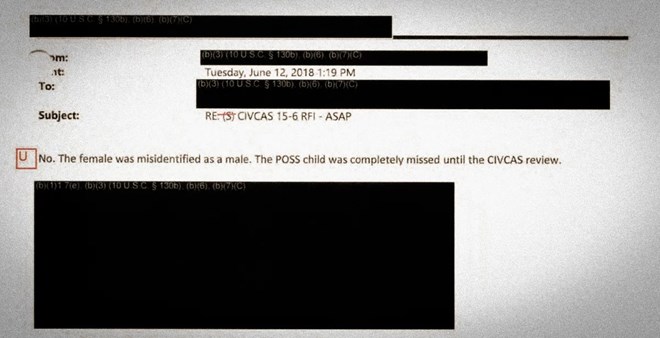
A June 12, 2018 email from a member of the Joint Task Force that conducted a drone strike that killed 22-year-old Luul Dahir Mohamed and her 4-year-old daughter Mariam Shilow Muse to the investigator who found that the rules of engagement and standard operating procedures were followed. Photo: Screenshot by The Intercept
Collateral damage
Over the last century, the US military has shown a consistent disregard for civilian lives.
It has repeatedly cast or misidentified ordinary people as enemies; failed to investigate civilian harm allegations; excused casualties as regrettable but unavoidable; and failed to prevent their recurrence or to hold troops accountable.
These long-standing practices – evident in the atomic bombs dropped on Hiroshima and Nagasaki and the carpet bombing of Vietnam and Cambodia – stand in stark contrast to the US government’s public campaigns to sell its wars as benign, its air campaigns as precise, its concern for civilians as overriding, and the deaths of innocent people as “tragic” anomalies.
During the first 20 years of the war on terror, the US conducted more than 91,000 airstrikes across seven major conflict zones – Afghanistan, Iraq, Libya, Pakistan, Somalia, Syria, and Yemen – and killed up to 48,308 civilians, according to a 2021 analysis by Airwars.
Key elements of America’s destructive brand of air war echo into the present. In recent weeks, Israeli officials have repeatedly justified attacks on Gaza by citing methods employed by the US and its allies against Germany and other Axis powers during World War II. The United Nations has said “there is already clear evidence that war crimes may have been committed” by the Israeli military and Hamas militants. In Gaza, Israel has also embraced the use of “free-fire zones” – which the US employed to open wide swaths of South Vietnam to almost unrestrained attack, killing countless civilians.
We are not the enemies
Living in al-Shabaab territory in the 2010s, Luul inhabited a world almost devoid of smartphones and social media. Her family has no photographs to remember her by.
The US government, meanwhile, has countless images of Luul. Its cameras captured video of her and Mariam entering the pickup truck, and analysts had eyes on her through her last moments. Luul’s visage now exists only in classified files and in the memories of those who knew her – and in the face of her younger sister, to whom she bore an uncanny, almost identical, resemblance.
Her family have yet to come to terms with her death.
“I was bewildered at the beginning when my daughter and wife were killed. I expected an apology and compensation considering the Americans’ mistake. But we received nothing,” said Luul’s husband, Shilow Muse Ali.
“They admitted there were civilian casualties, but this investigation shows that they don’t even know who they killed.”
In the intervening years, bewilderment has turned to anger. “We aren’t the people they are targeting. We are not supposed to be treated like we’re enemies. Does the US military even see a difference between enemies and civilians?” he asked.
“We want the truth from the American government. But we already know it,” he said. “This attack shows that there’s no distinction, none at all. The Americans see enemies and civilians as the same.”
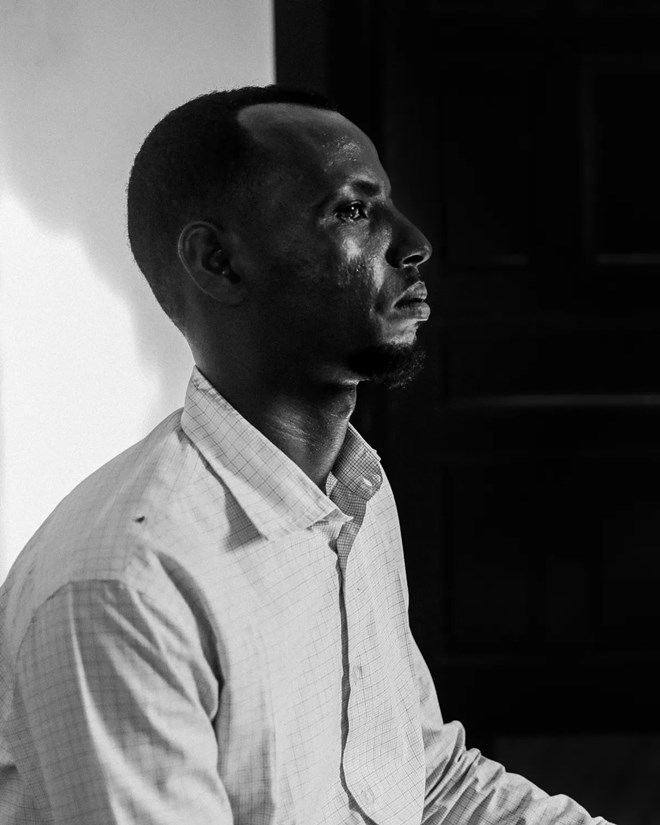
Shilow Muse Ali, Luul’s husband, poses for a photo in Mogadishu, Somalia, on May. 10, 2023. Photo: Omar Faruk for The Intercept
--
This story was supported by the Pulitzer Center and published by The Intercept, an award-winning nonprofit news organisation dedicated to holding the powerful accountable through fearless, adversarial journalism.